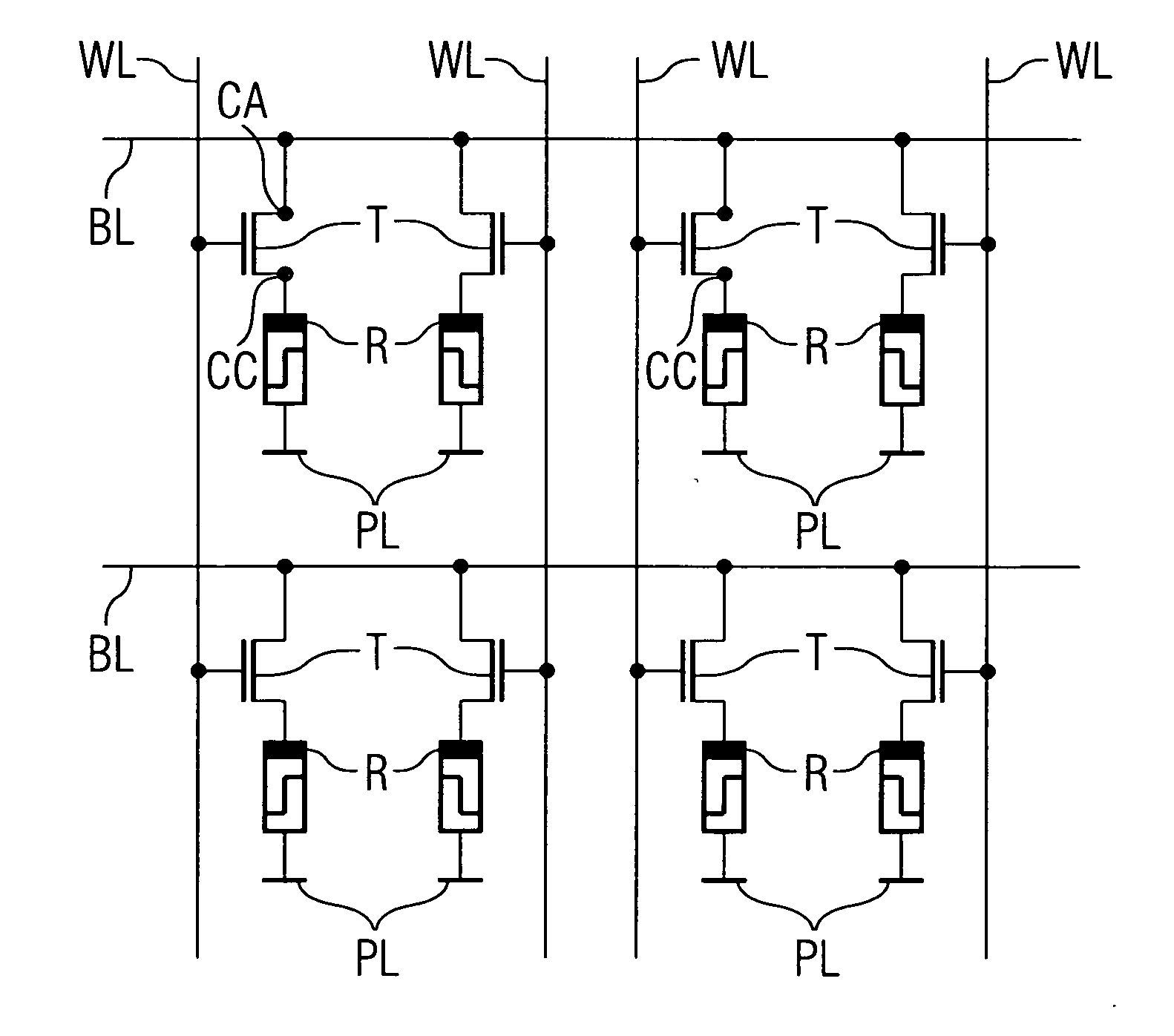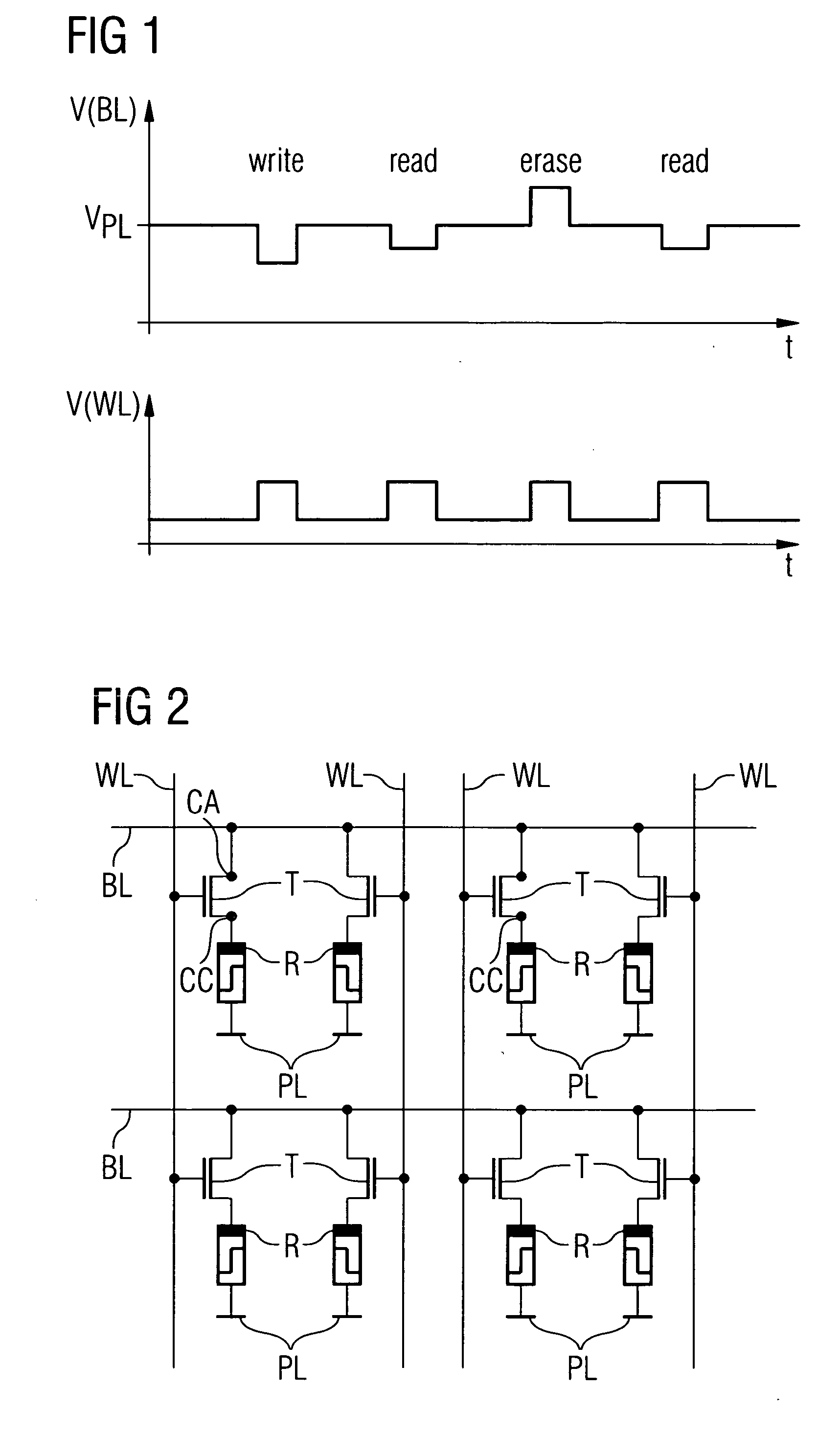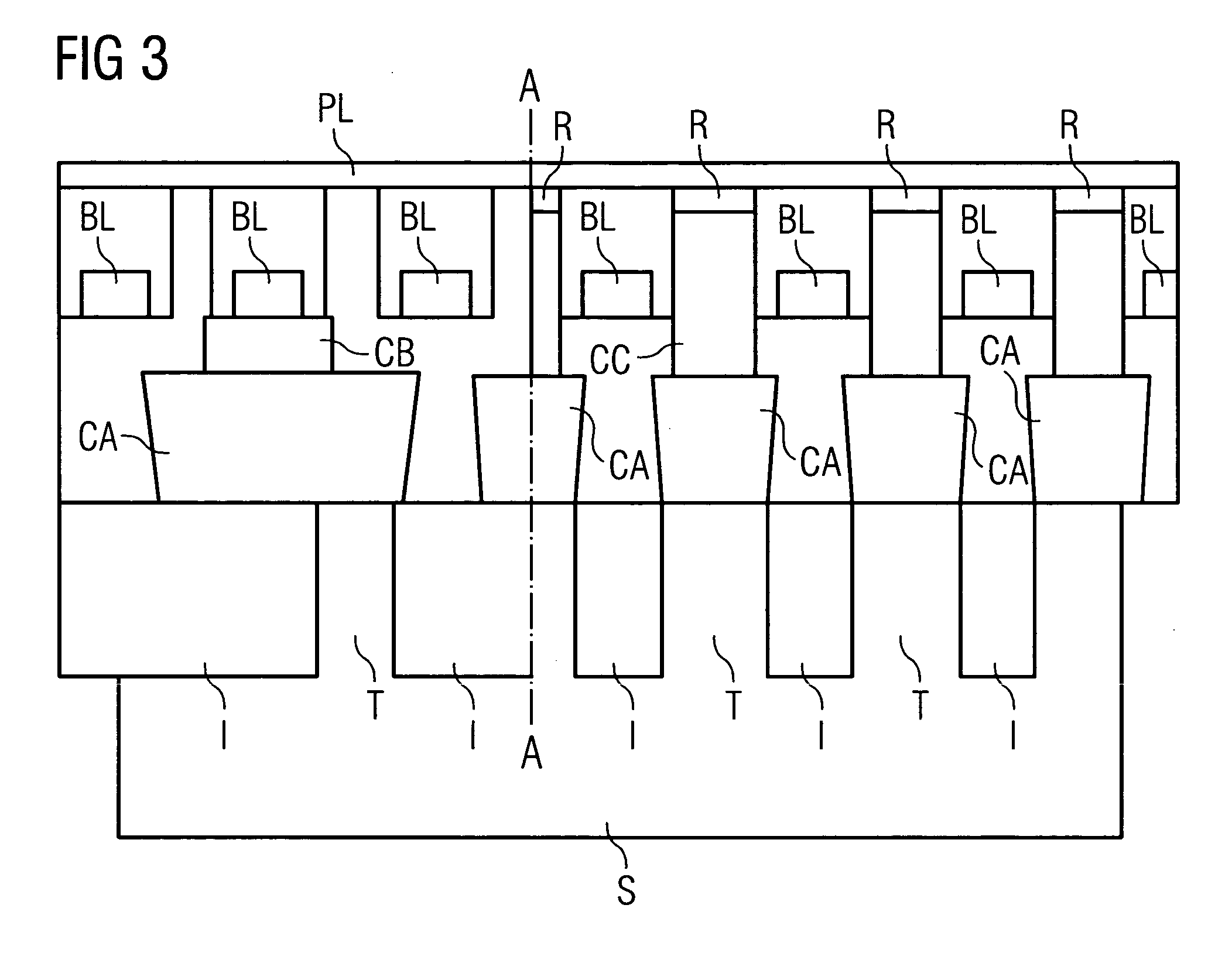Integration of 1T1R CBRAM memory cells
a memory cell and cbram technology, applied in the field of memory cell array or memory cell field, can solve the problems of no optimum solution, limited read cycle, high energy consumption of dram chip, etc., and achieve the effect of restricting the diffusion region of solid body electrolyte material and restricting spa
- Summary
- Abstract
- Description
- Claims
- Application Information
AI Technical Summary
Benefits of technology
Problems solved by technology
Method used
Image
Examples
Embodiment Construction
[0046]FIG. 1 shows respective diagrams for pulse triggering in the form of voltage pulses at the bit line V(BL) and at the word line V(WL) of a resistively switching solid body electrolyte memory cell. The diagrams each show a time sequence of a write pulse “write”, a read pulse “read”, an erase pulse “erase”, and a further read pulse “read” at the electrodes of the solid body electrolyte memory cell.
[0047] As described above, metal ions are diffused in a controlled manner from the anode into the ion conductor of the solid body electrolyte memory cell by applying bipolar voltage pulses at the electrodes of the solid body electrolyte memory cell. On applying a positive electric write voltage Uwrite>Uread at the electrodes of the solid body electrolyte memory cell, the metal cations diffuse from the anode under the influence of the external electric field through the ion conductor in the direction of the cathode, and dissolve in the ion conductor. The extent of the ion diffusion is c...
PUM
 Login to View More
Login to View More Abstract
Description
Claims
Application Information
 Login to View More
Login to View More - R&D
- Intellectual Property
- Life Sciences
- Materials
- Tech Scout
- Unparalleled Data Quality
- Higher Quality Content
- 60% Fewer Hallucinations
Browse by: Latest US Patents, China's latest patents, Technical Efficacy Thesaurus, Application Domain, Technology Topic, Popular Technical Reports.
© 2025 PatSnap. All rights reserved.Legal|Privacy policy|Modern Slavery Act Transparency Statement|Sitemap|About US| Contact US: help@patsnap.com



